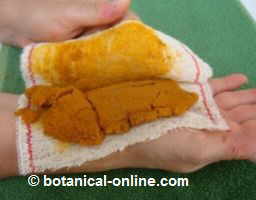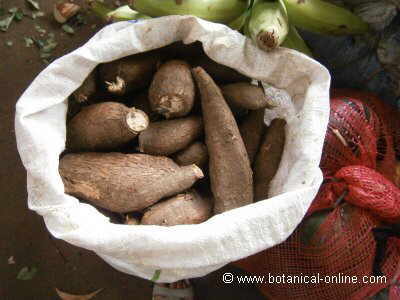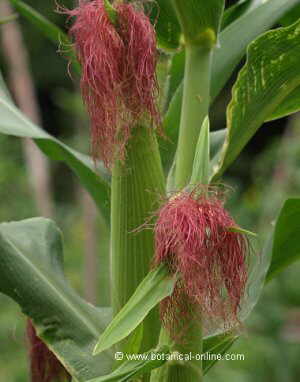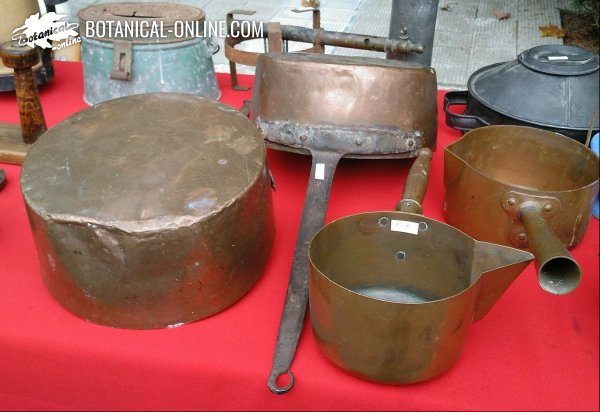Contents
Natural remedies for arthritis
Ointments, creams, rubs, and baths for arthritis
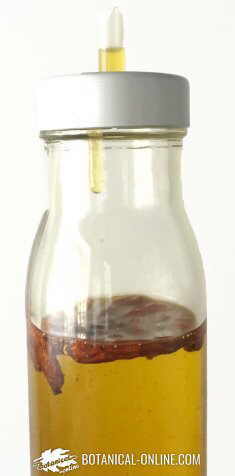
One of the components that is being studied the most is the beneficial effects of capsaicin (this component is part of the Capsicum genus, commonly known as pepper) on reducing pain in rheumatoid arthritis patients, while avoiding the side effects that conventional treatment entails.
Capsaicin is mainly extracted from cayenne pepper (Capsicum frutescens) and other types of hot peppers or chili peppers, and is very useful both for the external treatment of this disease and for internal consumption.
How do you apply cayenne creams?
Creams or ointments must be applied two or three times a day and require a few days for the positive effects to be seen. If there is no improvement after a few weeks, or if the patient’s condition worsens, the treatment must be discontinued.
Additionally, internal use of cayenne pepper infusions can help alleviate pain. (Infusion of a quarter teaspoon of cayenne pepper in a glass of hot water. Drink throughout the day in small sips.) (Macerate olive oil with cayenne pepper. It’s important to use organic ingredients!)
Poultices, massages, compresses and other external remedies for the treatment of pain
Phytotherapy for this disease focuses externally on relieving the joint pain caused by this disease, making it more bearable:

Photo of open gauze to show the turmeric paste used to prepare the poultice. It is used for joint pain. In the image, it is applied to the hand. Turmeric (Curcuma longa): It has anti-inflammatory properties due to its curcumin content. (A paste is prepared with turmeric powder and hot water, let it cool for 8 minutes, and apply the poultice to the inflamed joint).
- Arnica oil: It contains anti-inflammatory and analgesic principles, which are used to relieve joint pain and inflammation. (Apply a gentle rub on the sore joint with an ointment made from this plant)
- Rue (Ruta graveolens L.): Due to its rubefacient and revulsive properties, it helps soothe rheumatic pain. (Apply a compress soaked in a rue-rich infusion to the area—about 10-15 g of dried plant per liter)
- St. John’s wort oil: It has anti-inflammatory and analgesic properties. (Homemade St. John’s wort oil recipe)
Other plants for the treatment of pain for external use
- Ivy (Hedera helix): Ivy’s ability to decrease peripheral nerve sensitivity is used for the external treatment of pain, especially muscle pain or joint pain caused by rheumatism. (A compress containing a decoction of 200 g of leaves per liter of water has been used for several years. However, given the plant’s toxicity, it is advisable to use only standardized preparations according to the instructions in the package insert and under medical supervision.)
- Chamomile (Matricaria chamomilla): Rubbings with the liquid obtained by macerating 2 ounces of dried flowers in a liter of olive oil for a couple of hours. Store the liquid in a dark, tightly sealed container and apply when pain occurs.
- Mint (Mentha x piperita): (Dilute a few drops of peppermint oil in alcohol and soak a compress with them, then wet the affected joint.) (Poultice of leaves soaked in hot water to be applied directly to the painful area)
- Marjoram (Origanum majorana): The flowering tops are macerated in vegetable oil (olive, sunflower oils) in massage or in a hot poultice for rheumatic, joint, headache or toothache pain.
- Daisy (Bellis perennis): Due to its anti-inflammatory properties and flavonoid content, the daisy is used externally against joint and rheumatic pain (boil 100g of dried flowers and leaves in 1 liter of water. Bring to a boil and turn off the heat. Let stand for 15 minutes. Filter and apply a compress to the painful area).
- Fenugreek (Trigonella foenum-graecum): Apply a poultice on the affected area (cold decoction of 150g of fenugreek flour in 1 liter of water, and let it boil for 15 minutes until it forms a porridge. Let it cool for 5 minutes and apply on the desired area)
- Arnica (Arnica montana): The anti-inflammatory properties of arnica are very useful for the treatment of rheumatoid arthritis. (Apply a gentle rub on the painful joint with an ointment made from this plant)
- Oats (Avena sativa): Used to relieve pain caused by rheumatic diseases, a little oatmeal can be mixed with vinegar and boiled until it becomes a paste. Apply to the affected area. This same treatment can be used to alleviate severe from lower back pain.
- Comfrey (Symphytum officinale): (Decoction of the root and apply a wet compress to the affected area. See toxicity)
- Holy thistle (Cnicus benedictus L): (Apply a tincture of the plant to the affected area, made by fermenting a decoction of the dried plant in alcohol for 10 days)
- Marshmallow (Althaea officinalis): Apply a compress with the liquid resulting from a 10-minute decoction of a handful of dried root in a liter of water.
- Violet (Viola odorata): Violet contains numerous analgesic and anti-inflammatory properties that combat pain and reduce inflammation (Decoction of two tablespoons of crushed dried root per liter of water for 15 minutes. Soak a compress in the resulting liquid and apply to the painful area). Equally interesting is the violet ointment made with lard and violet leaves (See more information on pain ointment).
- Hops (Humulus lupulus): (Wet a gauze with a few drops of hop tincture diluted in a glass of water and apply to the affected area).
Essential oils for pain relief
Massage oils can be prepared with essential oils from anti-inflammatory plants (marjoram, eucalyptus, mint, lemon, ginger, etc.). To do this, the plant essential oils are diluted in an oil called base oil, which serves as a diluent and carrier for the medicinal components of the essential oils.
The base oil can be olive oil, almond oil, etc. Using analgesic and anti-inflammatory essential oils helps relieve pain.
- Homemade mint oil for pain
- Ginger oil (Zingiber officinale): The analgesic and anti-inflammatory values of ginger can be used externally to relieve joint pain and swelling in arthritic patients. (Infusion of a handful of ginger root in a liter of water. Soak a warm compress in the tea and apply it to the joints for 15 to 20 minutes. Repeat the treatment every 6 hours.) (Rub the painful area with 25 drops of ginger essential oil mixed with 100 ml of almond oil).
- Eucalyptus (Eucalyptus globulus): (Dissolve 20 or 30 cc (1 cc = 1 ml) of essential oil in a liter of water and rub it on the affected joint).
- Laurel (Laurus nobilis L.): (4 drops of essential oil 3 times a day) (4 drops of essential oil 3 times a day) (Rubs with the essential oil ointment extracted from the fruits)
- Lemon essential oil (Citrus limonum risso): Rub lemon essential oil on the joint or affected areas. Do not expose yourself to the sun for 12 hours after application, as this oil is phototoxic.
- Oregano (Origanum vulgare L.): (Apply essential oil to the affected skin area with a clean compress.) (Baths with very hot bath water, into which a couple of liters of dried flower infusion have been poured.).
![]() More information on natural remedies, diet, and supplements for arthritis
More information on natural remedies, diet, and supplements for arthritis

